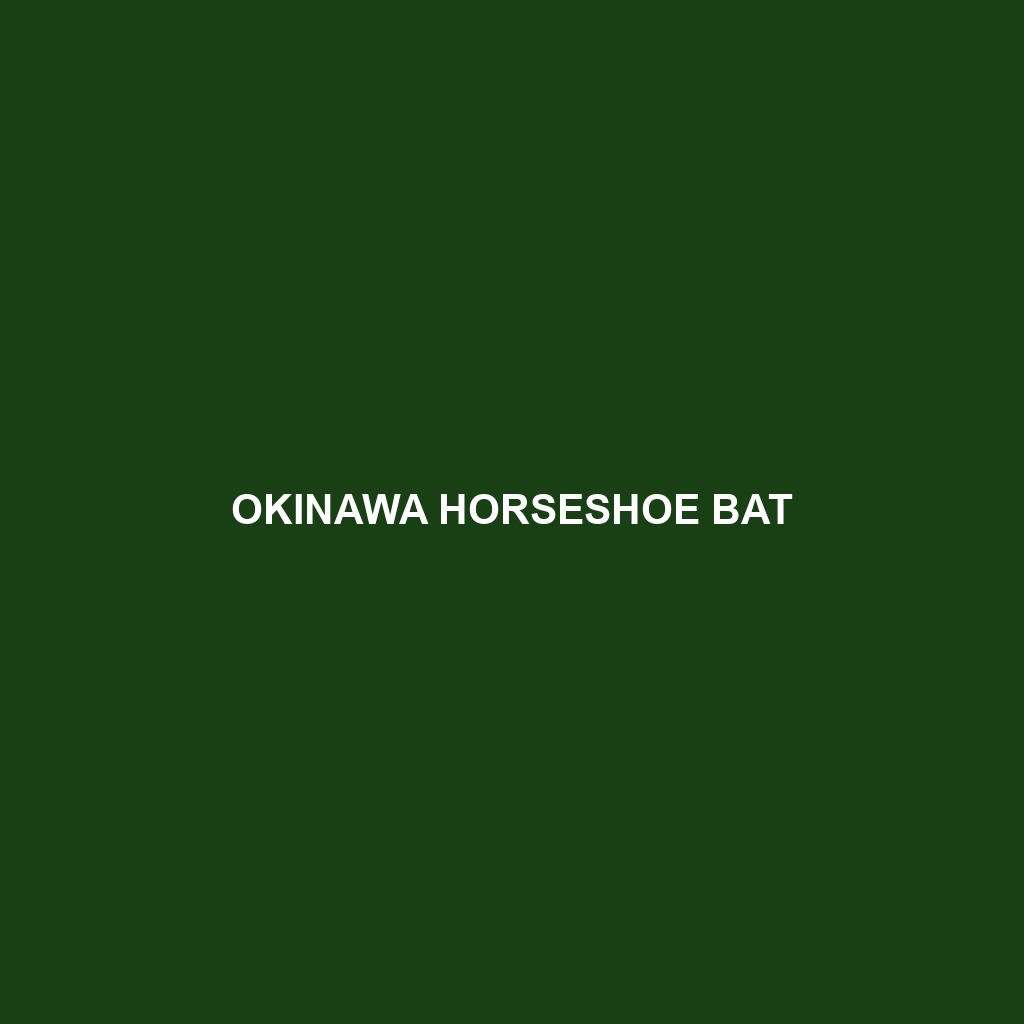Bornean Woolly Horseshoe Bat
Common Name: Bornean Woolly Horseshoe Bat
Scientific Name: Rhinolophus dewittei
Habitat
The Bornean Woolly Horseshoe Bat is primarily found in the tropical rainforests of Borneo, specifically within Malaysia, Indonesia, and Brunei. These bats prefer humid environments with dense foliage and often roost in caves, limestone outcrops, and tree hollows. Their distribution is closely tied to disturbances in forest ecosystems, making them sensitive to habitat loss due to deforestation and human activity.
Physical Characteristics
The Bornean Woolly Horseshoe Bat is medium-sized, with a body length averaging around 7 to 8 cm. They have a distinctive woolly fur coat that is typically dark brown to grayish in color. One of their most notable features is the horseshoe-shaped nose leaf, which aids in echolocation. Their large eyes and rounded ears are adapted for nocturnal activities, while their wings are long and narrow, enabling agile flight through dense vegetation.
Behavior
Bornean Woolly Horseshoe Bats are primarily nocturnal, emerging at dusk to forage for food. They exhibit stable roosting habits, often returning to the same locations nightly. Socially, they can be found in small colonies, which can enhance their protective strategies against predators. Their communication mostly revolves around echolocation, allowing them to navigate and hunt efficiently in their dark habitats.
Diet
These bats primarily feed on insects, particularly moths and beetles, which they capture in flight using their advanced echolocation skills. They play a crucial role in controlling insect populations in their ecosystems. Occasionally, they may consume fruit, though their diet primarily consists of small arthropods prevalent in Bornean rainforests.
Reproduction
The reproductive season of the Bornean Woolly Horseshoe Bat typically occurs during the wet months from May to August. Females give birth to a single offspring after a gestation period of approximately 2 months. The young bats are weaned within a few weeks and gain independence shortly after. Maternal care is strong, as mothers often return to their roost to nurse their young.
Conservation Status
The Bornean Woolly Horseshoe Bat is currently classified as vulnerable due to habitat destruction, primarily from logging and agricultural expansion. Conservation efforts are crucial to preserving their populations, focusing on habitat protection and sustainable land management practices to mitigate the impacts of human encroachment.
Interesting Facts
– The Bornean Woolly Horseshoe Bat is one of the lesser-known bat species, making it a subject of interest for researchers focusing on biodiversity.
– Their unique echolocation abilities allow them to detect prey in total darkness, showcasing their adaptation to a nocturnal lifestyle.
Role in Ecosystem
As insectivores, Bornean Woolly Horseshoe Bats play a vital role in maintaining ecological balance in their habitats. By controlling insect populations, they indirectly contribute to the health and sustainability of plant life in the rainforest. Additionally, their activities promote seed dispersal and pollination, which are essential processes in maintaining forest biodiversity and resilience.
